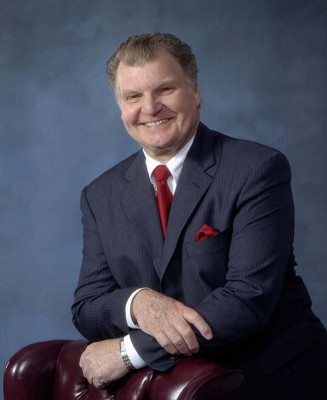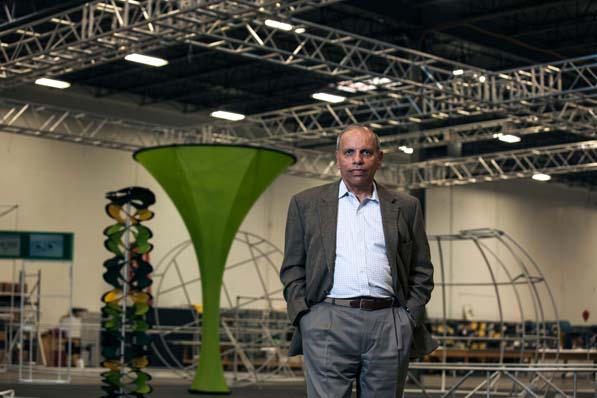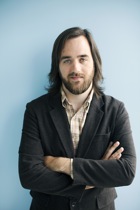
As one of the most important pioneers of software commerce, Tom Nies has been recognized for his innovative ideas by President Ronald Reagan, the Smithsonian, Sir Edward Heath, and many other esteemed dignitaries; has presented before the United Nations; and has been featured in many cover stories worldwide. His once revolutionary notion of software being the driving force behind computing solutions and not the hardware has shaped one of the most influential industries in the modern world. Recently, Nies spoke with Profile to discuss his philosophies on learning, selling, competition, and how intellectualizing the market and business place achieves results.
![]() The true translation of the famous Francis Bacon quote, “Knowledge is power” is actually “To know is to be able,” which is to say that education doesn’t necessarily increase productivity by itself, that motivation has to come from within. However, knowledge is still important. The people have to have the skills and the knowledge to know how to perform, if they’re going to perform optimally.
The true translation of the famous Francis Bacon quote, “Knowledge is power” is actually “To know is to be able,” which is to say that education doesn’t necessarily increase productivity by itself, that motivation has to come from within. However, knowledge is still important. The people have to have the skills and the knowledge to know how to perform, if they’re going to perform optimally.
Our experience in trying to help people learn suggests that one of the poorest ways is the method most widely used: lectures and slide presentations. This method does not involve the participants in the learning process and speaks at them and not with them.
What we’ve tried to do with our most recent learning initiative, Understanding University, and all of our other learning labs, is to create programs that intimately involve the participants so that the learning experience itself is as valuable or more valuable than the messages communicated.
Evaluating success is important, and we access success in many different ways. After every session we ask the participants to rate the relevance, quality of materials presented, and the method of presentation on a scale of 1 to 10. When we consolidate these ratings we are consistently getting scores between 8.5 and 9.5 for the overall day. Anytime you are getting above an 8 in a program like this, that’s excellent feedback.
We also conduct summary exercises that test how well the people have picked up the message and learned them during the session. Much of the time we find that people don’t perform well. This serves as a means to have them realize that under pressure you lapse back into what you’ve done for years and to have them attempt to guard against that.
Change is extremely difficult to effect on a personal basis or on an organizational basis. There is great resistant to change. People hate to admit that, but the fact is that when people reach a comfort level, they want to stay at that comfort level.
We have each presentation compete. The groups grade, evaluate, and rate the presenters and the presentations. The desire to compete and to win is a strong motivation. If people don’t have the desire to compete and to win, they never go anywhere. You need only turn on the television every Sunday afternoon to see that: whether it’s football, professional golf, or tennis, you’ll see people who have an extremely high desire to compete.
These techniques we’re using aren’t ancient techniques—they’re proven techniques. We borrow upon the progress that’s been made in a broad number of different educational and performance-affirming processes, and we incorporate the best thinking that’s been done by the best thinkers in the world. I always am looking for new things to incorporate and different ideas; I have been for over 40 years.
One of the things I believe is necessary is to expand the number of topics or disciplines we are trying to teach. For example, we now have three different major programs that we have created. One covers the nature of complex sales cycles: what really goes on in these sales cycles, what we can anticipate, and how we operate based on that.
Another focuses on the psychological factors and is called “why we buy.” It attempts to identify the primary psychological factors and how they are all interrelated to why people make decisions, not only in buying but everyday affairs.
The third is called the Human Rubik’s Cube, which analyzes human temperament and basic behavior styles. Again, we analyze this using the writings and the teachings from the best teachers the world has ever known.
What I’ve Learned
Lessons in Software
From Tom Nies
1.
“You need to focus on unsatisfied demand: what is it in the marketplace that customers really want but is not yet satisfied.”
2.
“Don’t try to outdo what has already been done, because you’re already at a disadvantage.”
3.
“You need the desire to compete. The desire to win is a strong motivation. If people don’t have the desire to compete and to win, they never go anywhere.”
Let’s talk about reading for a moment. First of all, if we say knowledge is power, we have to recognize that knowledge is built on information. The more information you have and are able to absorb, digest, and understand, the more knowledgeable you can become. And the more knowledgeable you can become the more powerful you can become.
I read everything imaginable because I realize that there are an unlimited number of things that I don’t know or have no realization of. I constantly try to expand my knowledge base—my reference base—and obtain an understanding of them in my own mind. Then I communicate them to our people in various papers, articles, essays, and courses.
Many people are not in the habit of reading. Not everyone has the desire to significantly improve one’s self. Not everybody has that. It can be difficult to put that motivation inside of people if it doesn’t already exist. We try to make the material available to the people that do have the desire to better themselves.
Most of what is available for consumption today—whether it be TV, books, articles—it’s targeted to the bulk of the market, which is in the middle of the bell curve. The C student. If you perform as a C student in the marketplace, you consistently lose. Not occasionally, consistently. So it’s important to filter what’s out there and go to the narrow end of the bell curve and begin to teach the kind of things that A students are interested in.
But the grades that count are not As, Bs, and Cs: they are Ws and Ls. Wins and Losses. Did I win or did I lose? That’s what matters. That’s the way that great thinkers in every field think.
When I was with IBM in 1964, we were attempting to install a new set of computers, but the software that was required to make those computers perform was not available and needed developing. And the customers were unhappy until we delivered the system they wanted, which was dependent on the software. What that experience helped me to see is that it wasn’t the computers that made the customers happy; it was the solutions that those computers delivered, and that the solutions were dependent on the software. I began to promote software because I thought it to be more important than hardware in the long run.
Forty years ago people asked, “Does this software run on our hardware.” Today they ask, “Is this hardware compatible with our software.” ![]()

